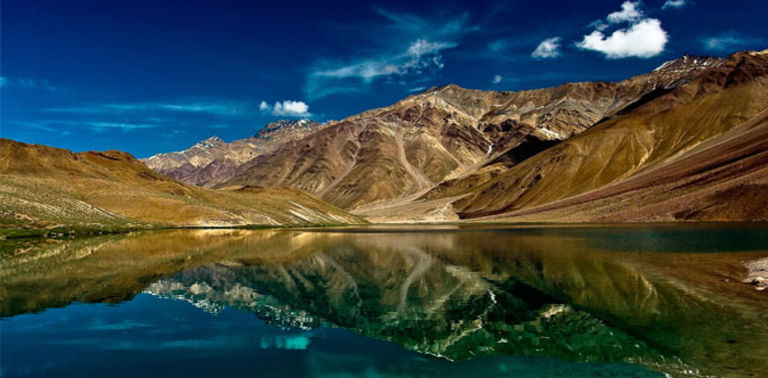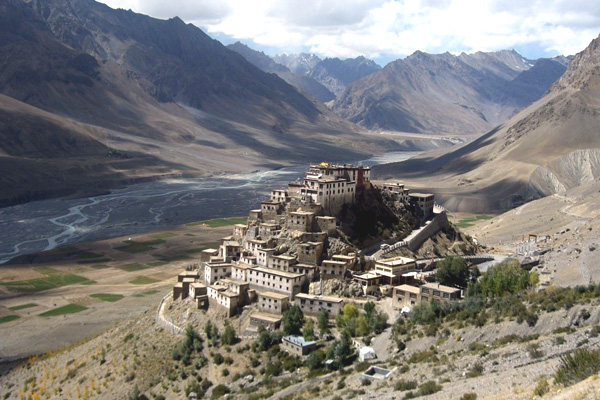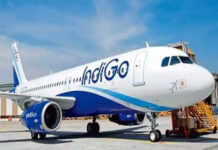Long winding roads and valleys that present unforgettable glimpses of cold desert and snow-crowned mountains welcome you when you set foot into Spiti Valley. Bordered on all sides by the Himalayas, Spiti Valley, located in Himachal Pradesh, has an altitude of 12,500 feet above sea level, and gets just around 250 days of sunshine in the year, making it one of the coldest places in the country. With the thick Himalayan snow cutting Spiti off from the rest of the country for around six months a year, the summer months are the only time Spiti is directly accessible via motorway.
The term Spiti means ‘The Middle Land’, as Spiti Valley separates India from Tibet. Scantily populated, Spiti is an adventure lover’s paradise, with a number of trekking trails that tourists can choose from. All of these treks start from Kaza (Spiti’s subdivisional headquarter from where you make your base camp) to various peaks from where you can get panoramic views of the Himalayan mountains. An easy 1.5-km trek along the Spiti river from Dhankar Monastery to Dhankar Lake promises gorgeous views of the villages below. The Dhankar Lake itself is a place where you can sit back and relax amidst the cool mountain air.
The mountain ropeway from Kibber to Chichum is also another popular tourist attraction that offers spectacular views of the gorge below, as well a bird’s eye view of the surrounding peaks.

Chandratal Lake
A camper and trekker’s paradise, Chandratal Lake is often referred to as one of the most beautiful lakes located at an altitude of about 4,300 m in the mighty Himalayas. The stunning lake is situated on the Samudra Tapu plateau which overlooks the Chandra River. The name “Chandra Taal” (Lake of the Moon) comes from its crescent shape. This lake is also one of two high-altitude wetlands of India that have been designated as Ramsar sites. Once a tentative residence for Tibetan traders traveling to Spiti and the Kullu valley, it attracts thousands of adventure enthusiasts from all over the world.
Legend has that the Chandratal Lake lies in the vicinity of a place from where God Indra’s chariot picked up Yudhishthira, the eldest of Pandava brothers in Mahabharata. This fact renders the lake sacred and thus, is flocked by a lot of Hindu devotees
Key Monastery
The Key Monastery is a famous Tibetan Buddhist monastery in the Lahaul and Spiti district of Himachal Pradesh. Located at an altitude of 4,166 m above the sea level, the monastery is very close to the Spiti river. Also known as the Kye Monastery and Ki Monastery, it is believed to have been founded by Dromton, who was a student of the famous teacher Atisha in the 11th century. It is also the largest monastery to be found in the entire Spiti Valley. Today, the Key Monastery is visited not only by locals but also by tourists from all parts of the country who come looking for it in order to seek quietude, silence and inner tranquillity.
Kunzum Pass
Kunzum Pass or Kunzum La, as it is called by locals, is one of the highest motorable mountain passes of India, located at an altitude of 4,551 m above mean sea level. It serves as a gateway to the beautiful Spiti valley via Kullu and Lahaul. It lies on the eastern Kunzum Range of the Himalayas and is at a distance of 122 km from Manali. Kunzum La offers an incredible 360-degree view of Bara- Shigri Glacier, the second-longest glacier in the world, a jaw-dropping vista of Chandrabhaga Range and a spectacular view of the Spiti valley. This enthralling view makes Kunzum Pass a photographer’s dream.
Suraj Tal
Located at an elevation of 4950 m above sea level, Suraj Tal Lake is considered as the third largest lake in India. Situated in Spiti valley, Suraj Tal In literal sense means, ‘The Lake of Sun God’. Just below the Baralacha Pass, the stunning lake should definitely be visited while here, especially if people are into photography. It is one of the most dream-like and photogenic lakes.

Pin Valley National Park
Set amidst semi-frozen rivers in the Pin valley, the Pin Valley National Park is situated in the Cold Desert Biosphere Reserve situated in the Lahaul and Spiti district of Himachal Pradesh. The elevation of the park ranges from about 3,500 m near Ka Dogri to more than 6,000 m at its pinnacle. The Pin Valley National Park is home to almost more than 20 species of flora and fauna including the endangered snow leopard which is its most significant inhabitant. There are also Siberian ibex, bharal, red fox, weasel and marten that call this place their home. Several species of birds also inhabit in the region such as pika, snow cock, bearded vulture, chukor, golden eagle, griffon, Himalayan chough and raven.
Dhankar Monastery
Dhankar Monastery, also referred to as Dankhar, Drangkhar or Dhangkar Gompa, is situated at an altitude of 12,774 feet. The monastery is perched unbelievably on the edge of a cliff and offers a panoramic view of Spiti valley. Built one thousand years ago on a 1000-foot high mountain and overlooking the heart-stirring sight of the confluence of Spiti and Pin rivers, Dhankar Monastery is listed as one of the world’s 100 most endangered monuments.
Being one of the main centres of Buddhist art and culture, the monastery has become a famous tourist destination. Besides enchanting views, the Dhankar Hompa has the statue of Dhayan Buddha and a small museum which stores scriptures and murals how to Reach Spiti Valley.
HOW TO REACH
Lahaul and Spiti are separated from Kullu by the Rohtang pass and Kunzum pass and it lies on the Manali-Leh highway. This route is fine to reach Spiti valley during the summers but is inaccessible for most parts of the year due to heavy snowfall. However, Spiti valley is accessible throughout the year from Shimla via Kinnaur (except for occasional disturbances due to landslides or heavy snowfall).
Route 1: Via Kinnaur through Hindustan-Tibet Highway
Reach Shimla via Delhi or Chandigarh in an overnight bus. There are many public and private buses running between Shimla and Kinnaur from 5 a.m. to 8 p.m. Beyond the specified time, there are a couple of overnight buses to Reckong Peo, headquarters of Kinnaur district. You can get these buses from the New Bus Stand as well as from the Old Bus Stand in Shimla.
In addition to this, you can also hire a shared taxi or even a private one (Xylo or Scorpio). The charges range from INR 2500 to INR 3500 per day from Shimla depending on the season and your bargaining skills.
Some people also prefer to drive down on their own. A drive in an SUV is safe enough but sedans or hatchbacks are not preferred due to major landslides and rough terrains.
Route 2: Via Manali
The other option is to take a private/public bus from Manali and reach Kaza through Rohtang Pass and Kunzum Pass. There are buses leaving from Manali at around 5 a.m. in the morning to Kaza.
You can also take a private vehicle and drive down on your own as the route is without any trouble (slushy roads etc.), unlike the Hindustan-Tibet Highway.







